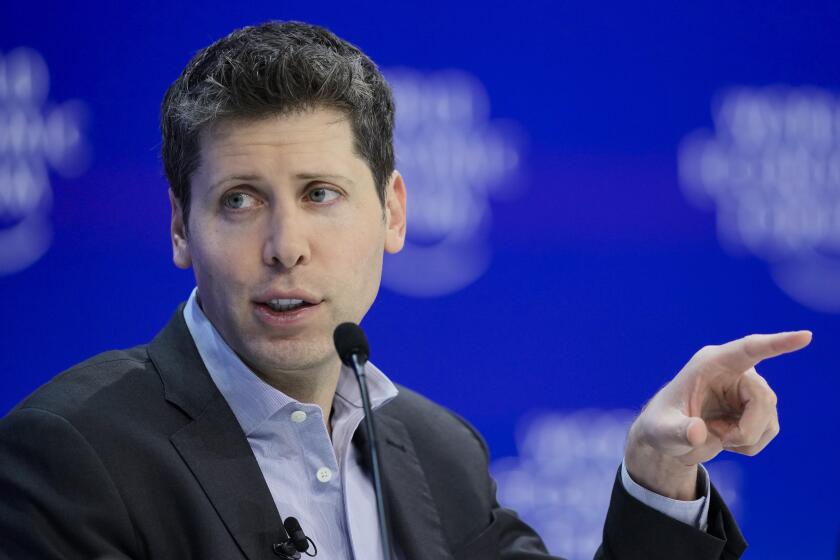Will Steven Soderbergh’s strategy of bypassing the studio system for ‘Logan Lucky’ pay off?

Trailer for Steven Soderbergh’s “Logan Lucky,” starring Channing Tatum, Riley Keough, Adam Driver, Daniel Craig and more.
- Share via
After a prolific career directing films including “sex, lies and videotape,” “Traffic” and the “Ocean’s Eleven” series, Steven Soderbergh said he was quitting the feature film business in 2013. He complained of the lack of financial and creative control directors get in Hollywood.
Four years later, he’s back with “Logan Lucky,” a $29-million action-comedy that he’s releasing in more than 3,000 domestic theaters this weekend — without the help of a traditional studio. The unconventional strategy is a bold experiment to shake up the system he has railed against for years.
If it works, it’ll be a classic Hollywood comeback story, mixed with a revenge tale. Soderbergh joins a long list of directors who have groused about the lack of creative freedom when working with the major studios. Some have been especially irked by the lack of influence over how their films are marketed.
Going it alone is a risky move. Movies released by studios and major distributors benefit from expensive TV ads, billboard campaigns and press junkets that generate hype long before a movie opens. Studios also have long-standing relationships with the major theater chains, a crucial asset for filmmakers who lack Soderbergh’s cachet in the industry.
“Logan Lucky,” about siblings in who try to pull off a heist in North Carolina during a NASCAR race, is not expected to top the box-office charts this weekend, despite major stars and stellar reviews. But, if successful, it could pave the way for more filmmakers to eschew Hollywood’s long-entrenched system of releasing and promoting movies.
“You've got to admire him,” said Jeff Bock, analyst for Exhibitor Relations. “It's admirable when you don't have to kowtow to how the studio wants to market your film. He's an auteur ... so he wants complete control.”
Soderbergh, through a spokesman, declined to comment.
To release “Logan Lucky,” Soderbergh launched distribution company Fingerprint Releasing with the help of Dan Fellman, the former president of domestic distribution for
A key part of the plan was to buffer the risk of going rogue by limiting the marketing costs, which add up to tens of millions of dollars per movie for the studios. They held back on TV advertising, saving 80% of their media buying budget until the last week of the marketing campaign, in contrast to studios that usually begin spending big money months in advance.
Instead of looking to Los Angeles and New York, they focused on courting audiences in the South and other regions, premiering the movie in Knoxville, Tenn., for a charity fundraiser with Regal Entertainment, and sending actor Channing Tatum on a road trip through NASCAR country. During one stop in Statesville, N.C., Tatum posted a viral video of him dancing with an employee at a Sunoco gas station.
“The key is, this is a marketing campaign that is not a big studio machine,” said Jack Foley, president of distribution at Bleecker Street.
“Logan Lucky,” starring Tatum, Adam Driver and Daniel Craig, is expected to gross about $10 million Friday through Sunday in the United States and Canada, according to people who have reviewed pre-release audience surveys. That would be a relatively soft box-office haul and probably lower than the opening for Lionsgate’s “The Hitman’s Bodyguard,” which could gross $16 million to $19 million this weekend.
Executives hope “Lucky Logan” will pick up steam as the advertising campaign picks up. The film also has a chance to draw moviegoers in the days following opening weekend because of strong reviews and a dearth of competition from other movies during a slow August at the multiplex.
“We're looking at it based on our first 10 days,” Fellman said. “We have a movie people enjoy, and we didn't spend at a level to create some giant opening.”
It’s a tough environment, especially for independent distributors. The box office is headed toward its worst summer in at least a decade, with sales since the first weekend of May falling 12% from the same period last year.
Still, Soderbergh has a long track record of making commercially viable movies, including the three “Ocean’s Eleven” movies, which collected more than $1 billion in worldwide grosses. He won the 2001 directing Oscar for “Traffic,” which grossed about $125 million domestically. (He was nominated for box-office hit “Erin Brockovich” the same year.)
More recent efforts, “Side Effects” and “Haywire,” were duds, released by Open Road Films and
It remains to be seen whether Soderbergh’s approach will take hold. Fellman said Fingerprint plans to make more movies with directors other than Soderbergh, and he’s already heard from filmmakers — he did not specify which ones — who may be interested in pursuing a similar path to the multiplex.
“This is our first attempt,” he said. “Many people out there are looking at this and rooting for us.”
Inside the business of entertainment
The Wide Shot brings you news, analysis and insights on everything from streaming wars to production — and what it all means for the future.
You may occasionally receive promotional content from the Los Angeles Times.








